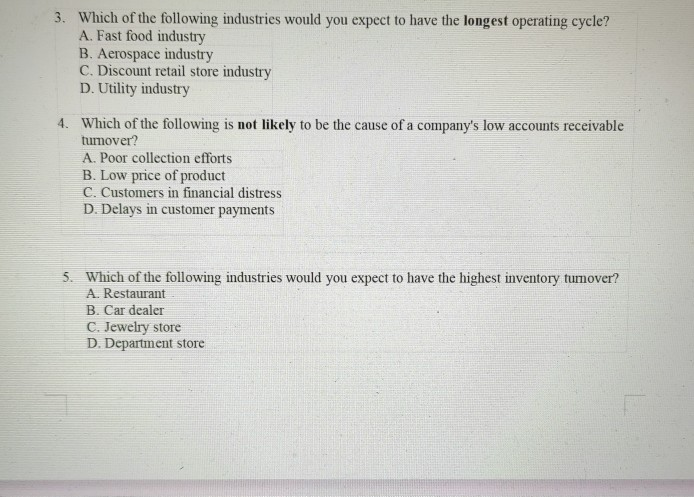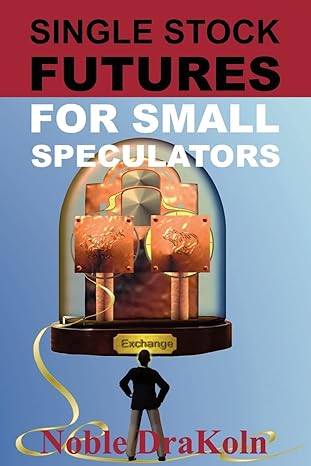Answered step by step
Verified Expert Solution
Question
1 Approved Answer
3. Which of the following industries would you expect to have the longest operating cycle? A. Fast food industry B. Aerospace industry C. Discount retail


3. Which of the following industries would you expect to have the longest operating cycle? A. Fast food industry B. Aerospace industry C. Discount retail store industry D. Utility industry 4. Which of the following is not likely to be the cause of a company's low accounts receivable tumover? A. Poor collection efforts B. Low price of product C. Customers in financial distress D. Delays in customer payments 5. Which of the following industries would you expect to have the highest inventory turnover? A. Restaurant B. Car dealer C. Jewelry store D. Department store 6. Trading marketable securities: A. are considered noncurrent assets. B. are recorded at amortized cost. C. are marked to the lower of cost or market each accounting period. D. are marked to market each accounting period. 7. The classification of marketable equity securities as trading or available-for-sale is determined: A. by management's intent regarding the disposition of the securities B. when the securities mature. C. whether the current assets are greater or less than the current liabilities. D. whether management wants to mark them to market or not. 8. The equity method of accounting for investments requires: A. investment should be marked to market each accounting period. B. proportionate share of investee's camings should be recorded as investment income. C. company should not have significant influence over investee. D. goodwill related to purchase of investee stock to be recorded separately on balance sheet. 9. Agwen Corporation owns 25% of the shares of Bronwo Corporation, which is traded on the New York Stock Exchange. Which method is Agwen most likely to use to account for this investment? A. Cost method B. Market method C. Equity method D. Consolidation method 10. Cash flows from operating activities include all of the following except: A. Collections from customers for sales of goods B. Interest and dividends received C. Payments of interest D. Payments of dividends
Step by Step Solution
There are 3 Steps involved in it
Step: 1

Get Instant Access to Expert-Tailored Solutions
See step-by-step solutions with expert insights and AI powered tools for academic success
Step: 2

Step: 3

Ace Your Homework with AI
Get the answers you need in no time with our AI-driven, step-by-step assistance
Get Started


